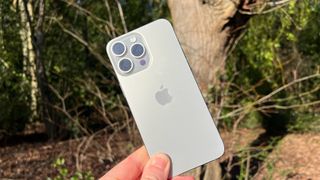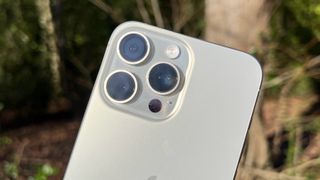The iPhone 15 Pro Max worries me…
I was an Android user for years and switched from a venerable iPhone 4S to a Samsung Galaxy S6 in 2015. Since then I’ve used some of the best Android phones.
So what I thought would be a brief flirtation with iOS and an iPhone 13 Pro in late 2021 ultimately led to a committed relationship with an Apple smartphone. Sure, I still have access to the likes of the Samsung Galaxy S24 Ultra, but my SIM card (we still use them in the UK) is in an iPhone.
Lately, the variety of Android and general boredom with iPhones almost made me return to Google’s smartphone platform, but just when I thought I was out of it, the iPhone 15 Pro Max pulled me back in.
And that’s fine with me, because it’s a fantastic flagship-quality smartphone. However, it may be a little too good – to the extent that I have no clear idea of where phones could go if they are more than just iterative upgrades over their predecessors.
But first let me tell you why the iPhone 15 Pro Max catches my attention, despite never really liking the Max phones.
The sum of its adjustments
First off, the titanium construction is a game changer, turning a heavy and bulky phone with a 6.7-inch display into a device I can pretty much use with one hand. And subtle tweaks to the sides, adding a degree of curvature to the edges, mean the iPhone 15 Pro Max still has the smooth flat edges that Apple brought back with the iPhone 12 series, but it’s a little more comfortable in the is in hand. The matte finish of the back of the phone and the way the colors blend with the titanium chassis is also very neat.
While the Dynamic Island isn’t perfect, it’s a welcome departure from the notch I begrudgingly grew accustomed to on the iPhone 13 Pro. And I don’t feel like it’s much more intrusive than the punch-hole cameras on Android rivals like the Google Pixel 8 Pro; plus the added functionality is appreciated if it is not always used optimally.
I also like the new action button, which I use to quickly activate the ‘torch’ – aka the rear camera flash. USB-C connectivity is very welcome. And I still love Apple’s take on a 1Hz to 120Hz display with its ProMotion display. Combined with slick software, the iPhone 15 Pro Max feels very fast.
Of course, it’s ridiculously fast with its A17 Pro chip, which can run console-quality games on a device that fits in your pocket much better than an Xbox Series X. There’s room for more performance to make these games run a little better. but with how much Apple Arcade has to offer, you’ll never have to find a fun game to play while surviving an annoying commute.
Finally, the camera suite on the iPhone 15 Pro Max is fantastic. The move to a 5x optical telephoto zoom lens adds a much-appreciated degree of flexibility to the camera system, while the main and ultra-wide cameras can take consistently great photos every time. I stand by the decision to put the Galaxy S24 Ultra at the top of Ny Breaking’s list of best camera phones, but I prefer Apple’s computational photography and image signal processing over Samsung’s.
Video is simply leading in its class and it’s very easy to record useful footage, even if you have all the camera skills of a dorky dog.
I’ve always resisted what can be a sycophantic love for Apple and its devices, because I feel like Cupertino gets a pass on things that people would crucify an Android phone to do without; I’m talking about a 60Hz display on the standard iPhone 15 and the glacially slow adoption of USB-C. But while I can’t defend the standard or the iPhone 15 Plus, I do believe the iPhone 15 Pro Max is pretty much the pinnacle of smartphones right now.
Where do we go from here?
The point is, all of this worries me that Apple won’t have much left in the tank to innovate further. Of course, Tim Cook’s team will certainly follow in the footsteps of Google and Samsung and embrace generative AI tools. And it’s not hard to predict that models like the iPhone 16 will be faster and have better battery life than before, perhaps with the addition of some fast charging.
But in terms of a major step change for iPhones, and indeed for Samsung’s Galaxy series, it feels like we’ve reached a plateau in smartphone evolution and innovation, at least in hardware terms.
I’m old enough to remember the days when each new smartphone felt like a real step up from the one before it, with cameras getting better and better, performance really mattering from generation to generation, and all kinds of new features being added. Today, one generation of phones is largely comparable to the previous generation.
Admittedly, a series of small changes to the iPhone 15 Pro Max have made it my favorite phone and worth upgrading to. But now that I feel like Apple has nailed the formula, I don’t see the iPhone 16 or iPhone 17 being much better: unless someone comes up with vastly different screen technology or battery materials.
So, am I bored with phones now? Well, not quite. I think my hopes for exciting iPhones will rest on the promise of a foldable iPhone, because I think Apple has the space and the know-how to deliver a great foldable phone experience. Likewise, I am willing to embrace the software side of innovation, where AI will certainly play a role.
But for now, I have to console myself with the idea that I have a near-perfect phone in front of me right now. And at a time when all kinds of things are looking bleak, that’s not a bad thing.


